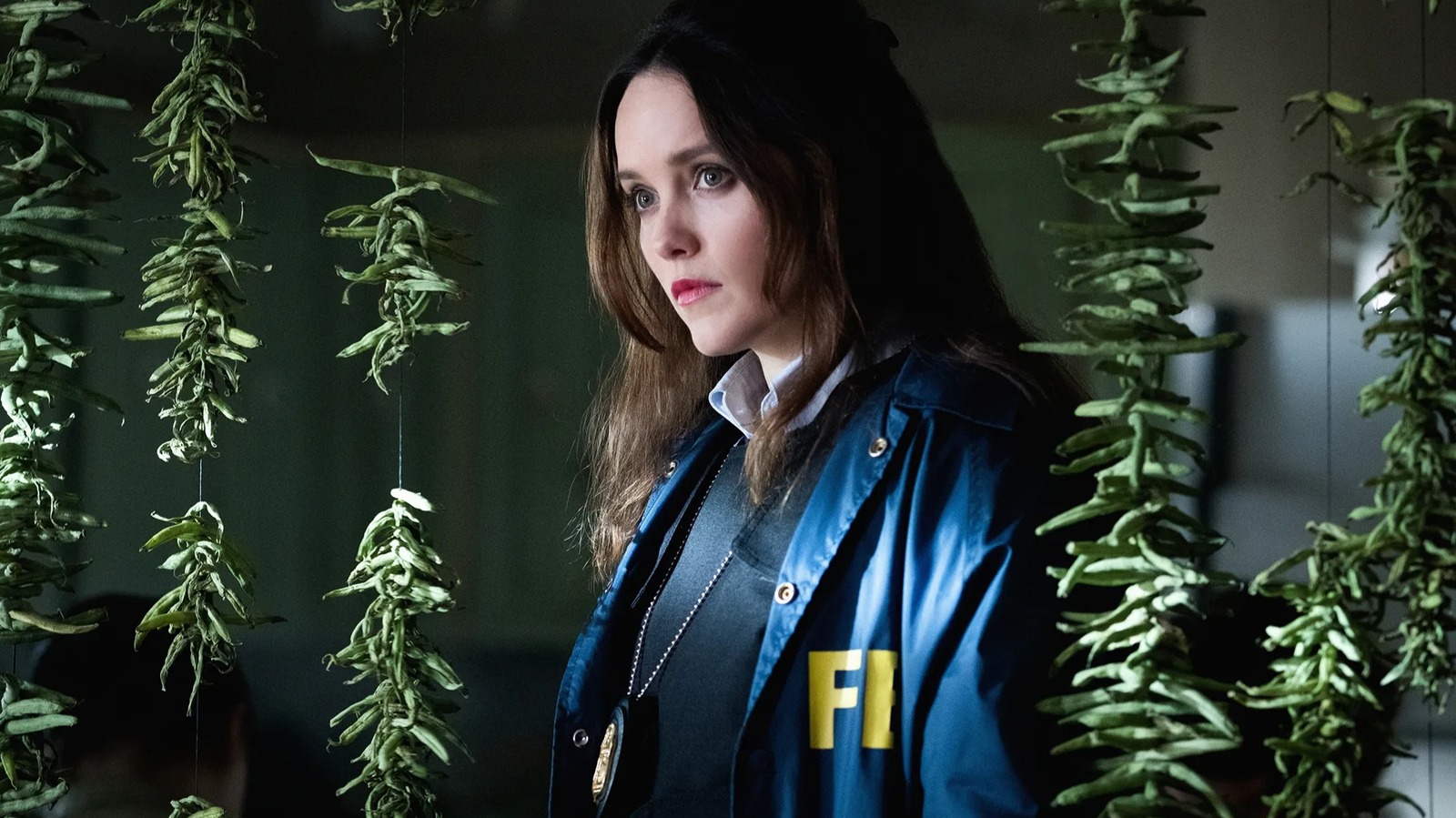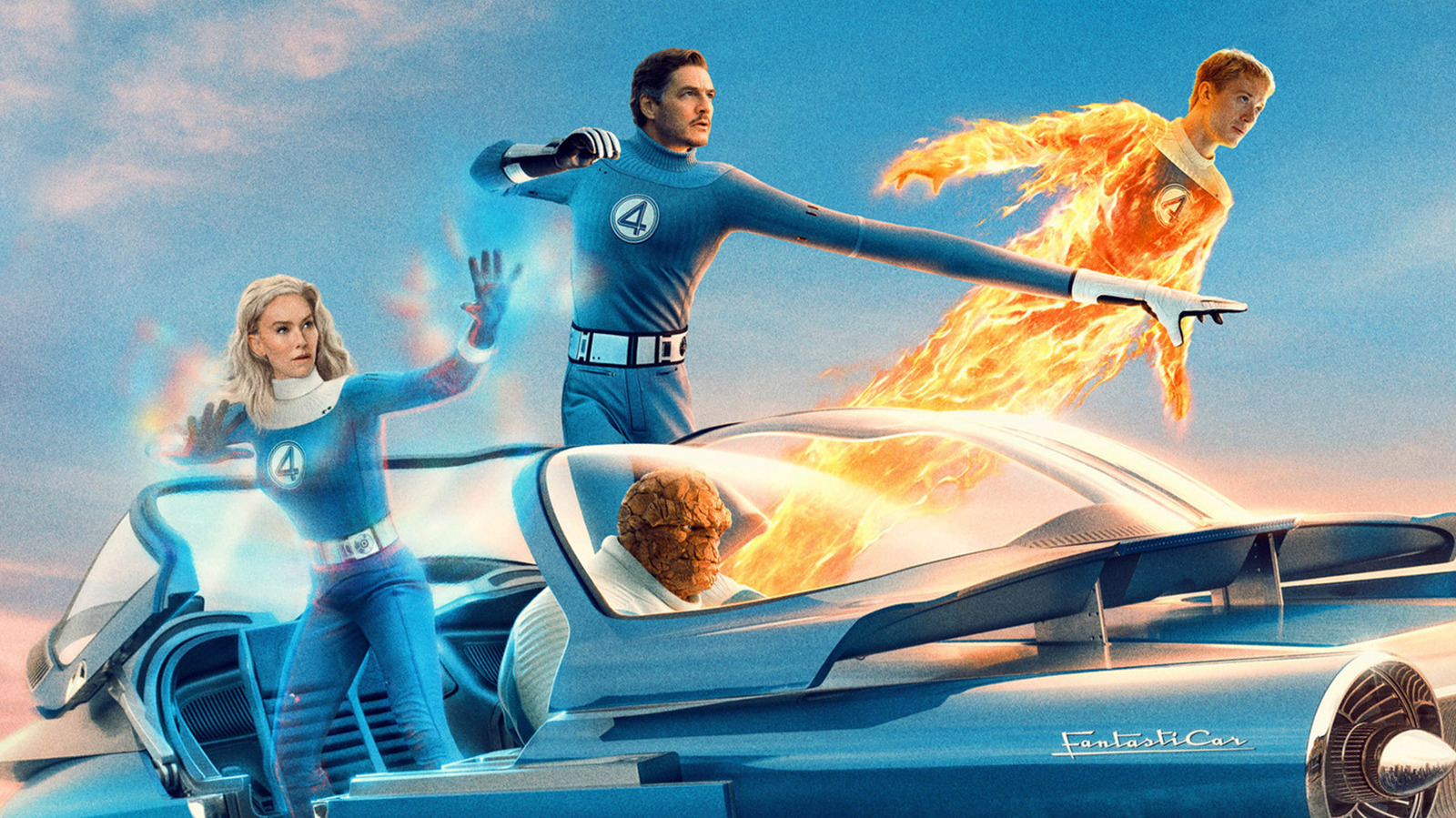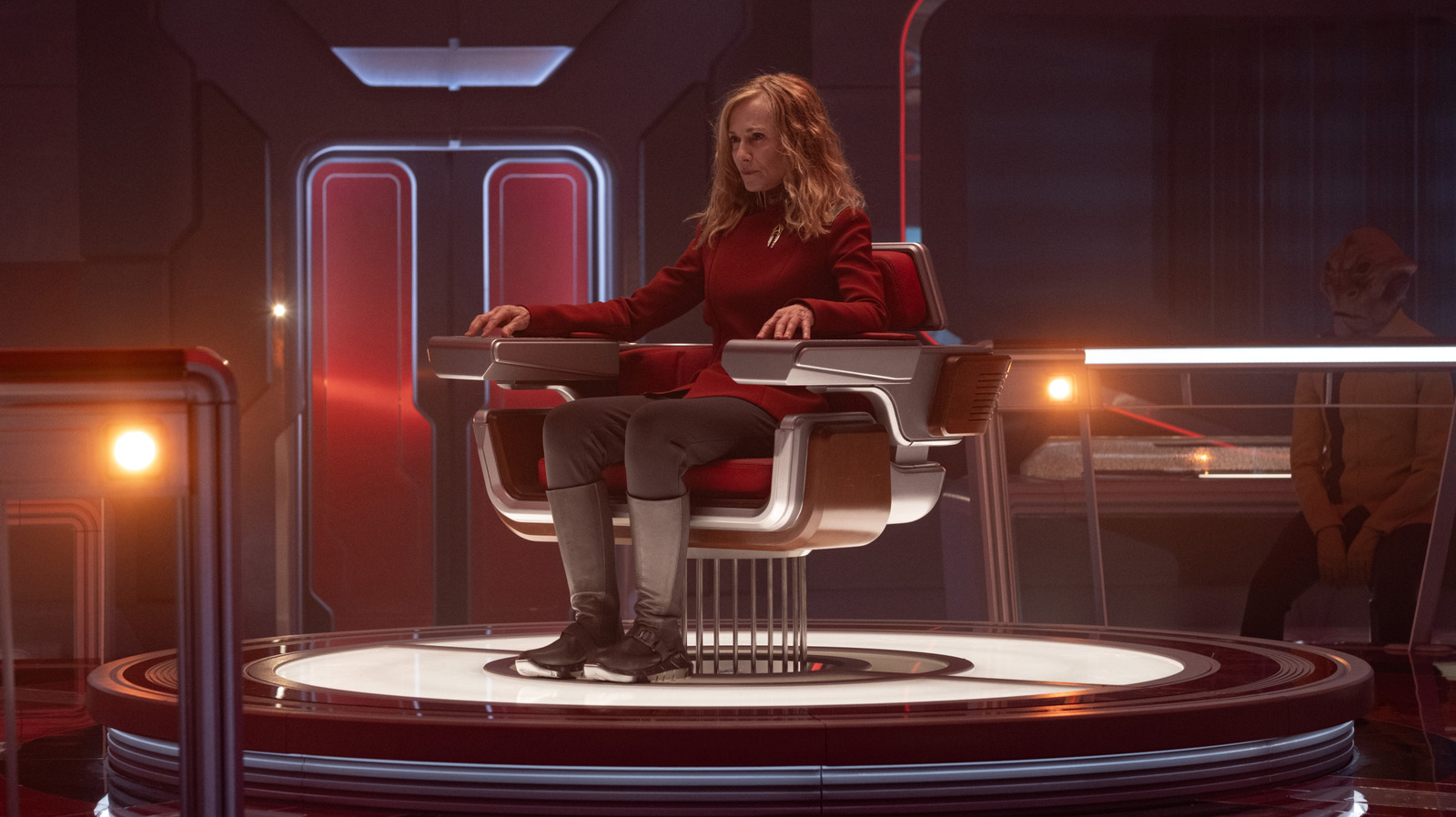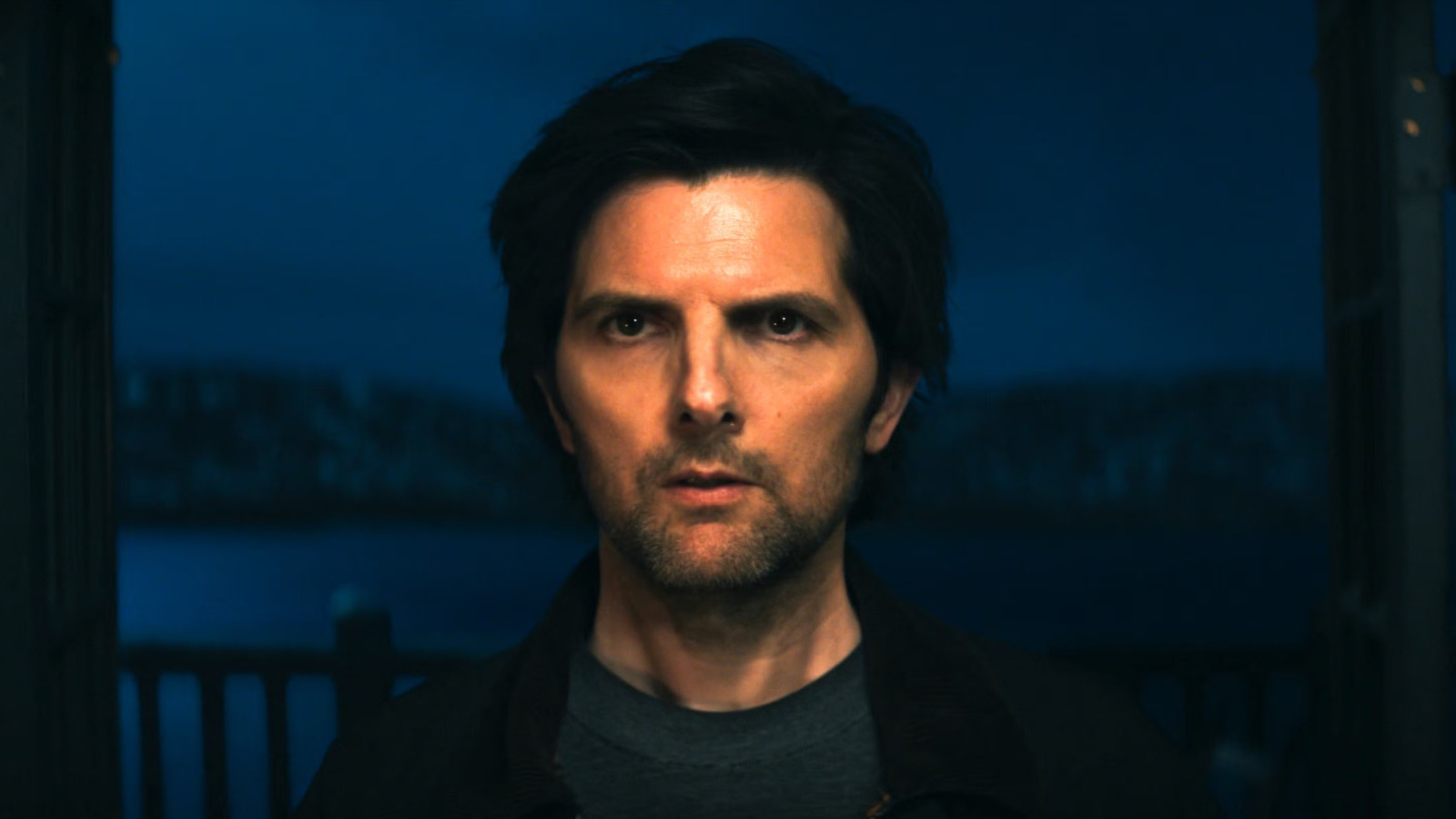
The Ekos booth at San Diego Comic-Con
Mythos Studios

Jame Gumb (Ted Levine), whose gender identity is tactlessly framed through an extremely damaging lens — a glaring flaw that still haunts the film’s glowing legacy more than 30 years since its release. The rest, however, is a compelling exploration of trauma and its manifestations throughout life, culminating in Clarice Starling’s (Jodie Foster) rattled utterance of the fact that the lambs haven’t stopped screaming.
Beyond its enduring pop culture references to fava beans and a nice Chianti, “The Silence of the Lambs” spotlighted one of the most fascinating fictional characters to exist within the psychological thriller genre. Anthony Hopkins’ brief, yet riveting turn as Dr. Hannibal Lecter helped cement the character’s legacy, promptly spawning one sequel (2001’s “Hannibal”) and two prequels (“Red Dragon” and “Hannibal Rising”) to further capitalize on the “Lambs” legacy. Fast-forward to 2013, NBC’s “Hannibal” stunned the world with a deliciously twisted, unapologetically psychosexual take on Thomas Harris’ source material, with special agent Will Graham given the chance to shine like never before.
It seemed that the world couldn’t get enough of Hannibal Lecter and his many iterations onscreen, and the only memorable story centering Clarice was sadly confined to the beloved 1991 film that started it all. That was until CBS’ “Clarice” was promoted as a follow-up to “The Silence of the Lambs,” promising to deliver the goods when it came to the vast complexities confined within its titular protagonist. Unfortunately, “Clarice” failed even before everyone could come to terms with its existence.
In the CBS show, we follow FBI agent Clarice (Rebecca Breeds) a year after the events of 2001’s “Hannibal.” Due to her prior involvement in the Buffalo Bill case, Clarice has to deal with constant media scrutiny, along with the morbid fascination of strangers/colleagues who mythologize and second-guess her at the same time. Tabloid magazines have run wild with speculations about her relationship with Hannibal, adding to the huge pile of rumors that have obfuscated the truth about who Clarice Starling truly is.
In reality, Clarice is not doing too well, as she is seen crashing on a fellow agent’s couch while mostly surviving on soda and candy. This is worse than a depressive stupor: once again, the lambs have started screaming, but this time, they take the form of the numerous victims she couldn’t help save. Just when you think this guilt will consume her, Clarice is put on a case that does little to heal the trauma she has experienced so far.
The problem with this premise lies solely in its shoddy execution. There’s some merit in exploring the damaging aftereffects of a rookie FBI agent’s first high-profile case, but “Clarice” relies a bit too much on “The Silence of the Lambs” to justify its existence. The first three episodes alone are half-hearted rehashes of what happens in the film, recontextualized through watered-down anecdotes and jokes that do not land. Breeds’ Starling isn’t the problem here, as her characterization is somewhat faithful to Harris’ novels, but her complex interiority is conveyed in such heavy-handed ways that any nuance is lost halfway through. Instead of having us infer or read between the lines, we repeatedly told that Clarice’s male colleagues are jealous of her reputation, and that she is bogged down by the blatant workplace misogyny that plagues her everywhere she goes.
The glaring lack of Hannibal is yet another drawback, although I genuinely believe that a taut, well-written story centering Clarice doesn’t need Hannibal to work or make its mark. Unfortunately, good writing isn’t one of the show’s strong suits, so “Clarice” unfortunately exists under the looming shadow of Hannibal’s absence, while having the misfortune of being unfavorably compared to NBC’s “Hannibal.” As expected, “Clarice” was canceled after a disappointing first season, bringing the complicated legacy of Clarice Starling to a grinding halt, at least for now.

plus a fourth one that was never released) that have failed to really make an impact or properly capture what makes the original characters fun — even if the 2005 film is not that bad!
Now, Marvel Studios hopes the fourth time is the charm, and it seems to be working. “The Fantastic Four: First Steps” is a vastly different take than the last three movies, and also different from any recent Marvel movie. Though it chooses style over substance, the style is so distinct and unique that it makes this a fascinating superhero movie. The retro-futuristic aesthetic and the stunning (award-worthy) production design create a world unlike any we’ve seen in the last 20 years. Plus, the focus on fun, hope, and family makes for a film that, as /Film’s Witney Seibold described in his review, “balances the team’s necessary, wimpy corniness with astonishing spatial adventures, emerging as one of the better superhero films of the year.”
Still, as many good ideas as “First Steps” has, it is still not the best “Fantastic Four” movie we’ve ever seen. That’s because the most perfect representation of the Fantastic Four already happened in a movie over 20 years ago, and it wasn’t even made by Marvel.
That’s right: The best “Fantastic Four” movie is still Pixar’s “The Incredibles.”
It’s been 21 years since “The Incredibles,” but it remains one of the best American animated movies of the 21st century. A big gamble for Pixar at the time, it was the company’s first movie entirely about humans and its first movie that came from an animator who hadn’t started out at the studio. “The Incredibles” is not just a, well, incredibly good animated movie, but also an incredibly good superhero movie. It oozes style without losing its substance, paying homage to the Golden Age of comics with an exquisite late ’60s, early ’70s aesthetic. It paid off big time, and saved the box office by becoming the biggest original superhero movie.
When “The Incredibles” first came out, many critics and audiences pointed out how similar it seemed to a Fantastic Four story, and the comparison pop up again juxtaposed against “First Steps.” Beyond the fact that both movies are about a family first and superheroes second, the fact that they have very similar powers is noticeable. Mr. Fantastic is basically a male Elastigirl, The Thing is just Mr. Incredible but made of rock, Sue Storm’s powers are similar to Violet’s, and (this will be important in a bit) Reed and Sue’s son, Franklin, is baby Jack-Jack.
Both movies have a retro-futuristic look, being set in alternate versions of the 1960s full of wonder and cool technology. And they both have an in medias res opening with a montage showing the history of their respective universes, showcasing the heroes’ feats through news footage. This helps establish the movies’ worlds and makes them feel full of history and detail. Both films also feature interrogations of the place of superheroes in society, with “The Incredibles” being set after the government decided not to pay for the property damage caused by heroes anymore and forced them into hiding, while “First Steps” is set in a world clearly made better by the work of the Fantastic Four. (Both also feature a mole man villain.)
But possibly the biggest similarity is how both movies feature an all-powerful creature that becomes a key part of the story’s climax: a baby.
A significant part of the story of “The Fantastic Four: First Steps” has to do with Reed (Pedro Pascal) and Sue’s (Vanessa Kirby) son, Franklin. Even before the child is born, he is being targeted by Galactus (Ralph Ineson), the Devourer of Worlds. Galactus believes the child has immense cosmic powers, perhaps as great as his, and is willing to let Earth survive if the Fantastic Four deliver the child to him to become his successor. By the end of the film, when Sue sacrifices herself to push Galactus into a portal that sends him far away, she is quite literally brought back to life via Franklin’s powers.
In the comics, Franklin Richards is considered one of the most powerful beings in the universe (and in one continuity, he becomes Galactus), even capable of creating entire new universes. He is the Marvel equivalent of Akira from “Akira.”
Though not exactly as powerful, baby Jack-Jack from “The Incredibles” serves a similar narrative function in the climax of the movie when we discover that the seemingly only normal member of the Parr family is actually its most powerful. After defeating the Omnidroid, Syndrome attempts to kidnap Jack-Jack to raise him as his sidekick, but he is killed after the baby develops every single power you can think of and kicks Syndrome’s ass. “The Incredibles II” doubles down on this by giving the baby even more powers, making for one adorable yet very dangerous toddler.
Even after 20 years, “The Incredibles” remains a stellar piece of superhero cinema and the best “Fantastic Four” movie that doesn’t feature the Human Torch (though Jack-Jack does have Johnny’s powers).


The Sony Pictures executive ranks are getting a shake-up, with Peter Kang having been upped to president of production of Columbia Pictures.
The move comes amid the looming departure of Sony Pictures Motion Picture Group co-president Josh Greenstein, who is leaving Sony to work for David Ellison in an undefined role once Skydance closes its $8 billion merger with Paramount Global. Earlier this year it was announced that Tom Rothman signed a multi-year extension on his contract as the chairman-CEO of Sony Pictures’ Motion Picture Group.
Kang will report to Sanford Panitch, who is now the sole president of Sony’s motion picture group. Panitch joined Sony in 2015 and a year later was named the president of Columbia Pictures. In 2019, he was promoted to president of Sony Motion Picture Group. Prior to Sony, he held positions at 20th Century (née Fox) and founded Fox International Productions.
Kang joined Sony in 2019 from Lionsgate, where he served as co-president of production. He is a veteran of Paramount and 20th Century, working on projects that include the Planet of the Apes franchise and Gone Girl.
Sony’s upcoming slate includes Darren Aronofsky’s Caught Stealing and Margot Robbie and Colin Farrell’s A Big Bold Beautiful Journey, with new installments in the world for the Spider-Man, Jumanji and 28 Years Later film series.

But could that be where “Starfleet Academy” comes in?
The upcoming “Star Trek” series isn’t due to arrive until 2026, but we’ve now received our first official look at it thanks to a new trailer released during the 2025 San Diego Comic Con … and it sure seems to be all about the idea of how to carry on the Starfleet torch. Set concurrently with the final season(s) of “Discovery,” in the distant future of the 32nd Century, “Starfleet Academy” focuses on humanity’s attempts to rebuild the flagship organization and train the next generation of space-faring officers. But that’s not the only aspect that caught our eye.
[embedded content]
We can expect plenty of connections to “Discovery,” largely in the form of returning characters Sylvia Tilly (Mary Wiseman) and Jett Reno (Tig Notaro), but the footage also includes several overt references to other “Trek” shows of yore. The appearance of a much more rugged-looking Robert Picardo as the holographic Doctor from “Voyager” is a nice touch, but it appears that the new series will also reach even further into the past and pay homage to one of the best and most beloved characters of all: Avery Brooks’ Benjamin Sisko. Like “Deep Space Nine” itself, this feels like a big swing and bold choice to showcase in a trailer … and, given the ambiguous ending surrounding the former Captain and Emissary, we’re hoping this amounts to more than just a simple tease.
Few individuals in “Star Trek” have cast a longer shadow than Benjamin Sisko, the reluctant leader who went on to play a massive role in winning the Dominion War and ultimately became a quasi-religious figure to the local population of Bajor as their Emissary of the Prophets. The finale of “Deep Space Nine” ended with the beloved captain seemingly dying in a blaze of glory … though, in actuality, he was ushered away to the otherworldly “Celestial Temple” as a reward for fulfilling his spiritual purpose. Ever since, what actually happened to Sisko has remained a topic of great interest — both among fans and, as it turns out, in-universe among the characters of the “Star Trek” franchise as well.
The “Starfleet Academy” trailer includes one tantalizing shot where young cadet Sam (Kerrice Brooks) gazes in reverence at what looks like a museum installment dedicated to the good Captain. “Did he die in the fire caves of Bajor?” and “Did he live on in the Celestial Temple?” are two potential questions asked rhetorically on the plaque, offering up no easy answers to what’s been hanging over the head of the property since “Deep Space Nine” ended back in 1999. Could the series be setting up an actual resolution to Sisko’s fate? Could this be a sneaky way to make a backdoor sequel to the show, much in the same way the brilliant “Star Trek” documentary “What We Leave Behind” suggested?
That’s extremely doubtful, but this marks the first time the franchise has attempted to address this loose plot thread … canonically, at least. A handful of non-canon novels sought to provide an answer to this, most prominently the book “Unity” that came as part of a “Deep Space Nine” relaunch series to mark the show’s 10th anniversary. The recent comic book series “Godshock” also revolves around the return of Sisko and even has him teaming up with an assortment of “Trek” characters like Beverly Crusher, Tom Paris, Data, and more. For now, we’ll have to wait and see what (if anything) “Starfleet Academy” does to explore this topic when it arrives on Paramount+ sometime in early 2026.

San Diego Comic-Con gave fans plenty of dazzling, new movie footage last week, from the talked-about 20 first minutes of The Long Walk and two extended scenes from Tron: Ares to the comical first five minutes of Project Hail Mary. But one thing there wasn’t much of? A first-look at movie nobody had previously seen any footage whatsoever.
An exception came at the end of Thursday’s Aspen Comics panel, which screened what was described as a “super-early, super-rough” teaser for Ekos, an upcoming film that has been in development for several years. The trailer (below) takes inspiration from works of Michael Turner, the late artist and Aspen Comics founder, and writer Geoff Johns.
It is the launching point of a new cinematic universe, and the trailer was intended to be for in the room only, but after the strong reaction, the team at Mythos Studios decided to release it online.
[embedded content]
The surprise reveal was teed up by Mythos Studios founder and chairman David Maisel, who is best known as the founding chairman of Marvel Studios, where he conceived of the company’s strategy of interconnected films, launched Iron Man and orchestrated Marvel’s sale to Disney in 2009, when he exited.
At the end of the Aspen Comics panel, he noted that one of the proudest things he was involved in introducing at Marvel was the end-credits scene, so what he was about to show could be considered the end-credits scene of the panel. He went on to joke, “When I saw that my family at Marvel was not doing Hall H this year, they asked me to step in” and do something similar for fans in the room.
The Hollywood Reporter spoke to several fans who were in the room, with multiple likening it to the feeling of being at Comic-Con in 2007 when the first footage for Iron Man debuted.
Maisel is currently seeking a partner to make the film, which takes place in a universe in which Turner’s characters can interact, ala the MCU. Turner, who died from cancer in 2008, is known for such as Fathom, which was the top-selling title of 1998, and Soulfire.
The teaser trailer comes on the heels of Ekos Vol. 1, a graphic novel that bowed earlier this year, with help from more than $250,000 from fans for a Kickstarter campaign. It largely focuses on the character Grell, who Maisel is positioning as a breakout in the film. As the footage shows, Grell is concerned about devastation affecting the planet.
Says Grell in the footage: “The world needs a wake-up call.”

The Ekos booth at San Diego Comic-Con
Mythos Studios

the second season of “Severance,” Mark (Adam Scott) has arrived at a special cabin room that presents him with a strange and rare opportunity. While inside the cabin room, Mark is his “innie,” that is, he only has memories of working inside the bleakly corporate basement of Lumon. He has no memories of his life outside of Lumon. Then, when he steps through the door out to the balcony, Mark reverts to being his “outie,” that is, he only has memories of his ordinary life and can’t remember anything that occurs inside the walls of Lumon. Although Mark is merely swapping back and forth between two sets of memories, the bifurcation has led Lumon employees to think of themselves as two different people.
Outie Mark, by that point in the series, has discovered that his presumed-dead wife Gemma (Dichen Lachman) is actually alive and being held captive inside a Lumon sub-basement. To free her, though, Outie Mark must convince Innie Mark to help. Innie Mark, as one might suspect, is reluctant. Because he has no memories of Gemma, he has little at stake in rescuing her. Also, Innie Mark has developed feelings for his co-worker Helly (Britt Lower), and leaving Lumon would essentially end his life.
Thanks to the balcony at the cabin, Mark’s two halves can communicate. Outie Mark records a message on a camcorder while sitting on the balcony, and then steps inside, where Innie Mark takes control and watches the message. Innie Mark then records his rebuttal and steps outside, where Outie Mark watches. It’s the easiest way for Mark to talk to Mark.
Scott spoke with EW recently, and he described that scene as immensely weird. He found that, while rehearsing the scene and nailing the technical aspects of playing two characters, Scott would have to pause to note that “Severance” is a very strange program.
Scott, show creator Dan Erickson, and episode director Ben Stiller all had a plan on how they were going to shoot the Innie Mark/Outie Mark scene, but they found that they had to abandon that plan very quickly. When Adam Scott received the script for the episode, he got a camcorder and recorded himself performing both halves of the scene in his apartment. The idea was to use the apartment-shot footage on set, giving Scott and the editors something to react to and time the scene around. The apartment-shot scenes would then be replaced, in post, by on-set footage.
But, because of the nature of “Severance,” the scene was rewritten on the fly. The rewrites rendered Scott’s home-recorded footage useless. Eventually, Scott and Stiller merely shot the final draft of the script using a camcorder on set to record live footage. The shooting of the scene played out more or less the same way as the scene itself. Scott figured filming the scene would be a weird actorly experience, but the surreality of everything hit him hard. As he put it:
“I think that part of what I was thinking about, at least at the beginning of the scene when they first start talking to each other and looking at each other on these screens, was just how weird that would be, and just to take some time at the top to marvel at how f***ing weird this is. Ben felt the same way, so it was nice to have a beat of that in there. Because sometimes in science fiction, you are going with the reality of the story — the reality of the world — and you forget to take a moment for people to react, like, a person. Like, “Holy s***, can you believe this is happening?”
The real Adam Scott began to lose memories of what the outside world was like, it seems. Which is wholly fitting for “Severance.”